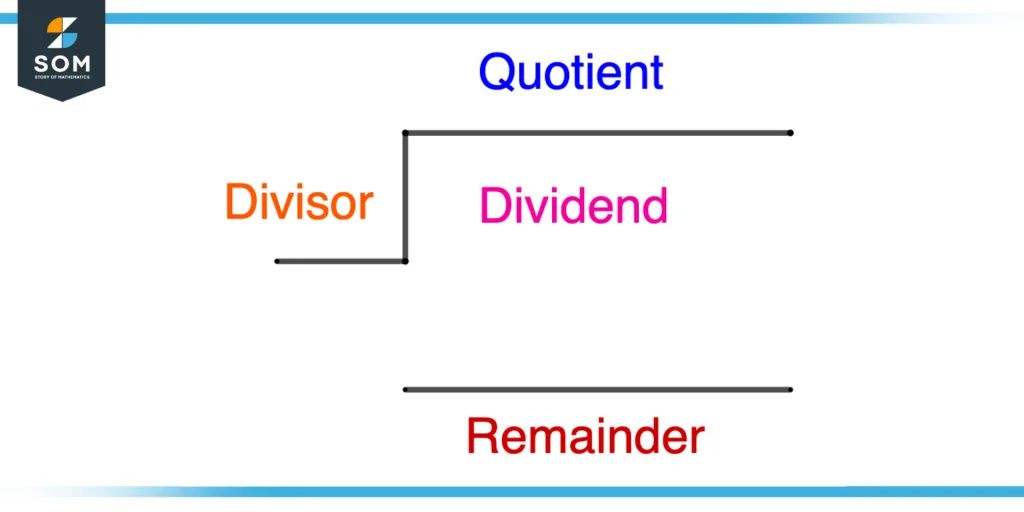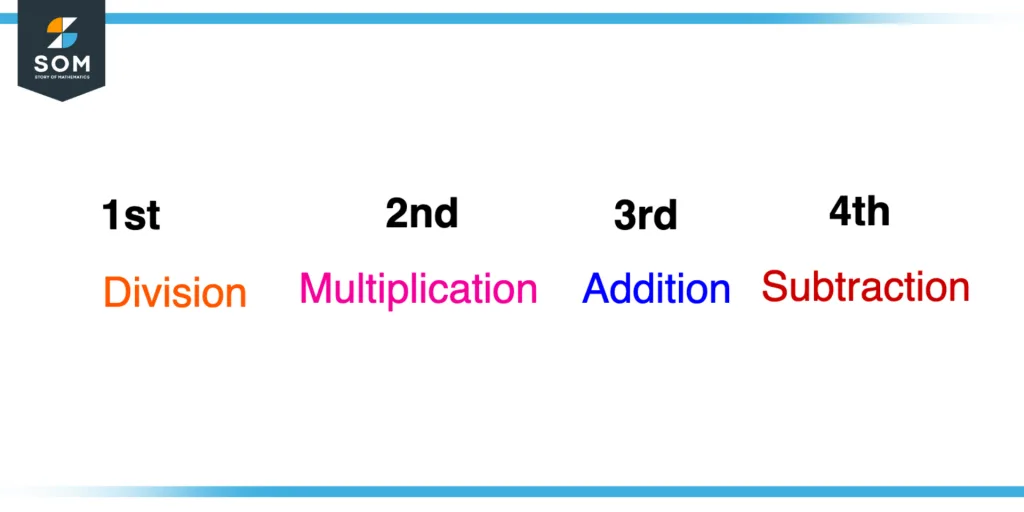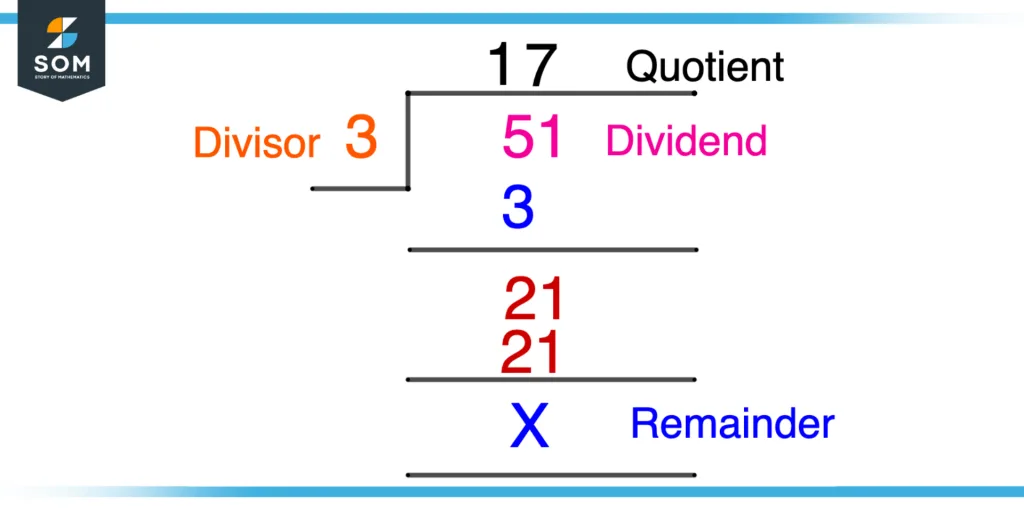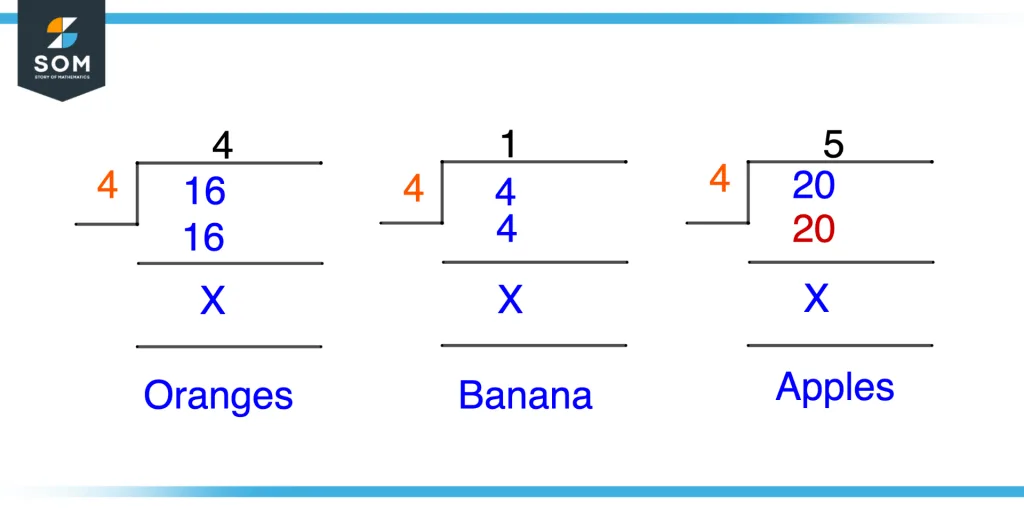JUMP TO TOPIC
Division|Definition & Meaning
Definition
The division is defined as the process of distributing a fixed quantity of items into sub-quantities in such a manner that every sub-quantity has an equal number of items in them. The term quantity could be anything like fruits, books, or arithmetic numbers. Out of the four essential arithmetic operations of mathematics Subtraction, Addition, and Multiplication, Division is one of them.
Concept Building
Dividing simply means making equal parts or dividing into equal amounts among a group. An equal-area triangle consists of two equal triangles divided by a diagonal in a square. Depending on the division operation, the result may be an integer or not. Decimal numbers may sometimes be used to represent the result.

Figure 1 – Symbol of Division
Let us take an example of division. There are 50 students and 5 classes; we want to divide the students among the 5 classes. What we will do is simply split the students into 5 batches of 10 students each, and send each batch to a separate class. Thus, we have assigned 50 students equally in 5 classes, with each class containing 10 students.
We can consider division as a repetition process of successive subtraction or the opposite of the multiplication operation.
Symbol Representation
There are generally three different symbols used for division shown above
Divide ($\boldsymbol\div$)
Division of number 6 with 3 gives:
6 $\div$ 3 = 2
Forward Slash ($\boldsymbol/$)
Division of 4 books among 2 students:
4/2 = 2
Bar ($\boldsymbol{\frac{\phantom{a}}{\phantom{b}}}$)
Division of 8 apples among 4 people:
$\mathsf{\dfrac{8}{4}}$ = 2
Mathematical Formula for Division
$\mathsf{\dfrac{Dividend}{Divisor}}$ = Quotient + Remainder
Dividend
The dividend is the term or item which we want to split into different equal sub-parts. For example, if we want to divide 10 oranges among 5 people then the 10 oranges will be the dividend.
Divisor
The divisor is the term that split the dividend into equal sub-parts or in other words we can say the term with which we want to divide something. In the above example, 5 people are the divisor.
Quotient
The result obtained by the splitting of the two items is known as the quotient, for example dividing 10 oranges among 5 people gives a quotient of 2. In other words, the quotient is the term that decides the quantity of each subgroup.
Remainder
The remainder is the residual result left after the division operation for example division of 10 pencils among 3 students results in the remainder equal to 1.

Figure 2 – Parts of Division Formula
Order of Division Operation
In mathematics, Division is highly prioritized among other arithmetic operations. Division operation has the first-order meaning that whenever there is an arithmetic problem we will first perform division operation.

Figure 3 – Order of Division Operation
Properties of Division
- The division of any number by integer 1 gives the number itself or in other words division of any number gives the dividend as the result.
- The division of any number by integer 0 gives infinity or more precisely not defined.
- The division of a number by the number itself gives the result as 1 or in other words, if the dividend and divisor are the same then the result will be equal to 1.
- If the dividend is 0 then the division operation with any other number gives 0.
- If we divide any number by 100 the remainder will be equal to the number at the unit and tens position and the rest of the number will be considered quotient.
Dividing Fractions
It is possible to divide fractions as well. Division operators need to be transformed into multiplication operators when dividing fractions. The following example shows the concept.
\[ \mathsf{ \frac{4}{3} \div \frac{4}{2} = \frac{4}{3} \times \frac{2}{4} = \frac{2}{3} } \]
In fraction, the division sign is changed into a multiply sign with the fraction being reversed as shown.
Dividing Float Numbers
Mathematics consists of a variety of concepts that divide decimal numbers. In many ways, the decimal division is similar to the fractional division. To understand how decimal division works, let’s look at the example below.
4.5 $\div$ 2.5 = $\mathsf{ \dfrac{45}{25} }$ = $\mathsf{\dfrac{9}{5}}$ = 1.8
Dividing Polynomials
It is possible to divide polynomials by other polynomials, as opposed to numbers and fractions. Two methods are available for polynomial division, however. As opposed to dividing numbers, the polynomial long division uses polynomial expressions to divide polynomial expressions. The synthetic division method is another way to divide polynomials.
Steps for Division
- First, figure out the data and define terms such as divisor and dividend.
- Write the dividend inside the division symbol hat as shown below example.
- Write the divisor outside the hat of the division symbol as shown below example.
- Now start dividing the dividend by the divisor and write the result on the top of the hat.
- This result written on the top will be considered as the quotient.
- If the dividend is not completely divided then bring the next digit down and repeat the process.
- On repeating the process if we got any residual result left at the end and further dividend cant be divided then we will consider this residual result as the remainder.
Examples of Division
Example 1
Consider a scenario there are 51 players, and we want to make n teams in such a way that each team consists of players not more or less than 3. Describe the division process graphically also. How many numbers of teams can be formed?
Solution
As from the problem statement, we are provided with the dividend as 51 players and divisor as 3, so in order to find the n teams that can be formed, we will simply divide 51 by 3, which gives us 17. So we can make 17 teams by splitting or dividing 51 players into teams of 3 players each. The calculation is shown below.

Figure 4 – Division of Players Examples
Example 2
Harry bought 16 Oranges, 4 Bananas, and 20 Apples for his family. The number of count of his family member is 4, including him. How will you divide all the fruits among family members of Harry?
Solution
We illustrate the division process in figure 5 below.

Figure 5 – Division of Fruits Example
Division of Oranges
Total oranges = 16
Number of family members = 4
Dividend = 16
Divisor = 4
Solving (leftmost in figure 5), we get:
Quotient = 4
Division of Bananas
Total bananas = 4
Number of family members = 4
Dividend = 4
Divisor = 4
Solving (middle in figure 5), we get:
Quotient = 1
Division of Apples
Total apples = 20
Number of family members = 4
Dividend = 20
Divisor = 4
Solving (rightmost in figure 5), we get:
Quotient = 5
So each family member got 4 oranges, 1 banana, and 5 apples.
All mathematical drawings and images were created with GeoGebra.
